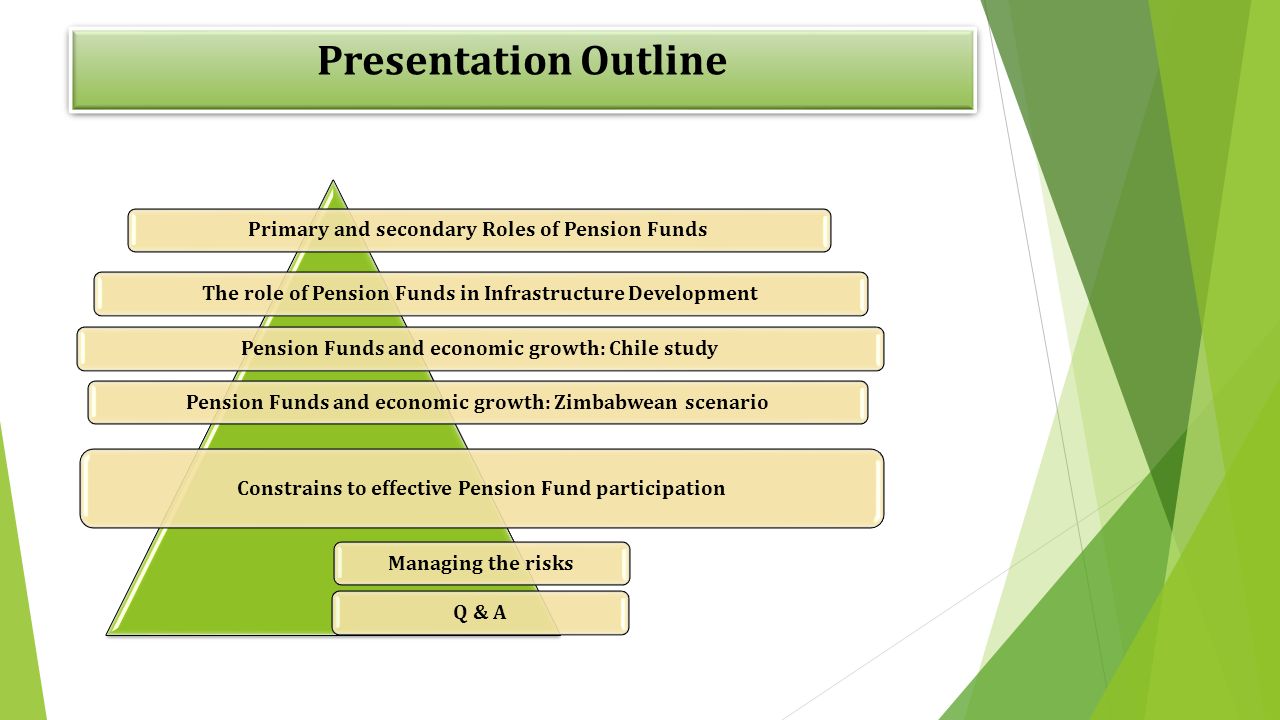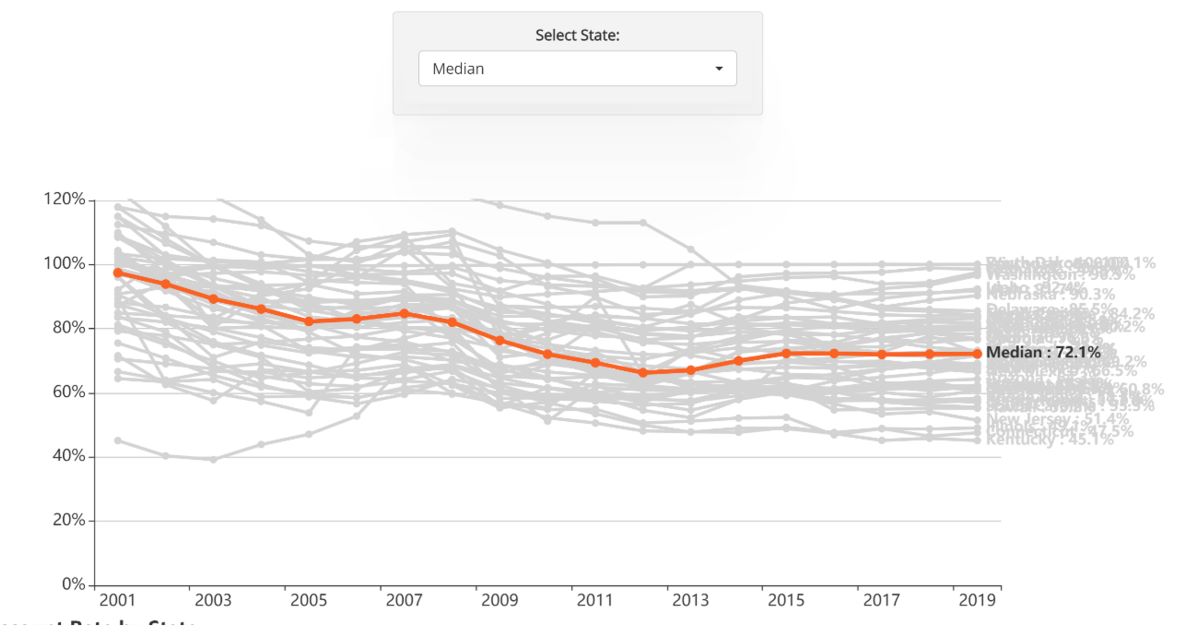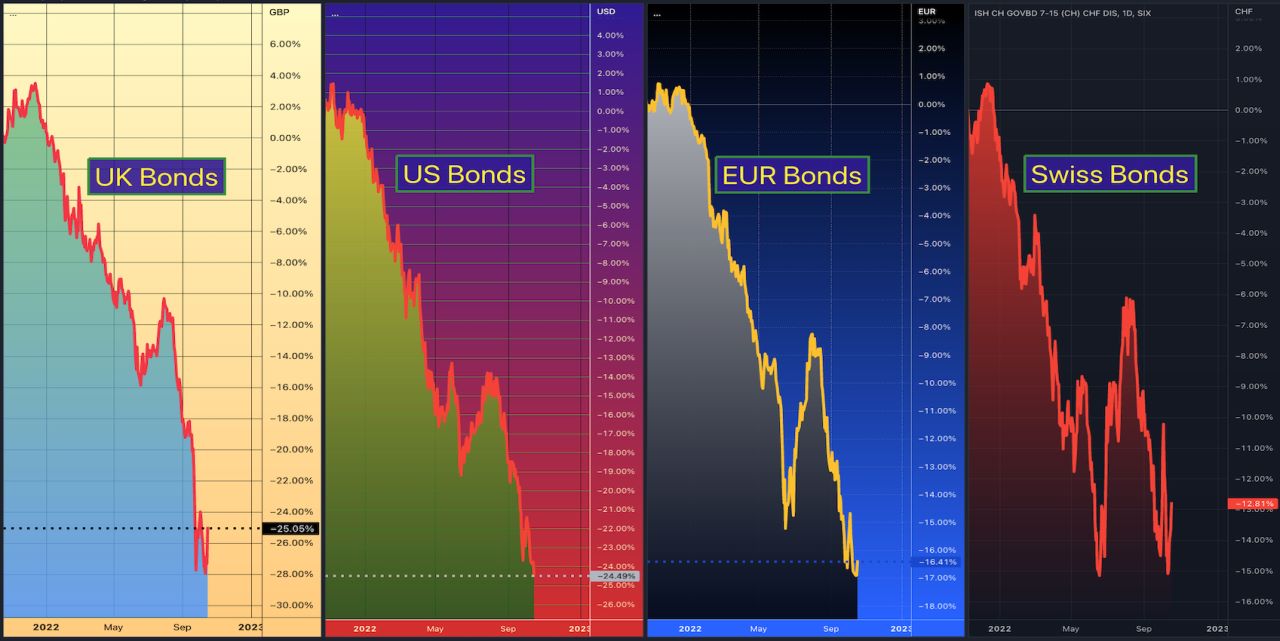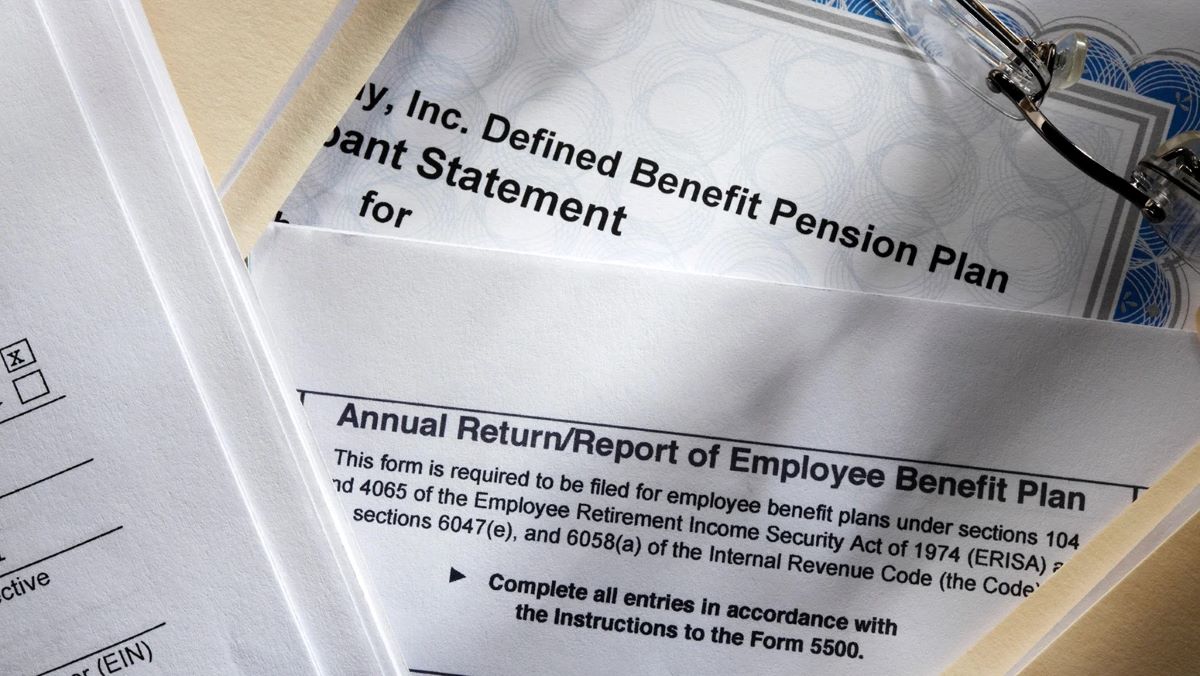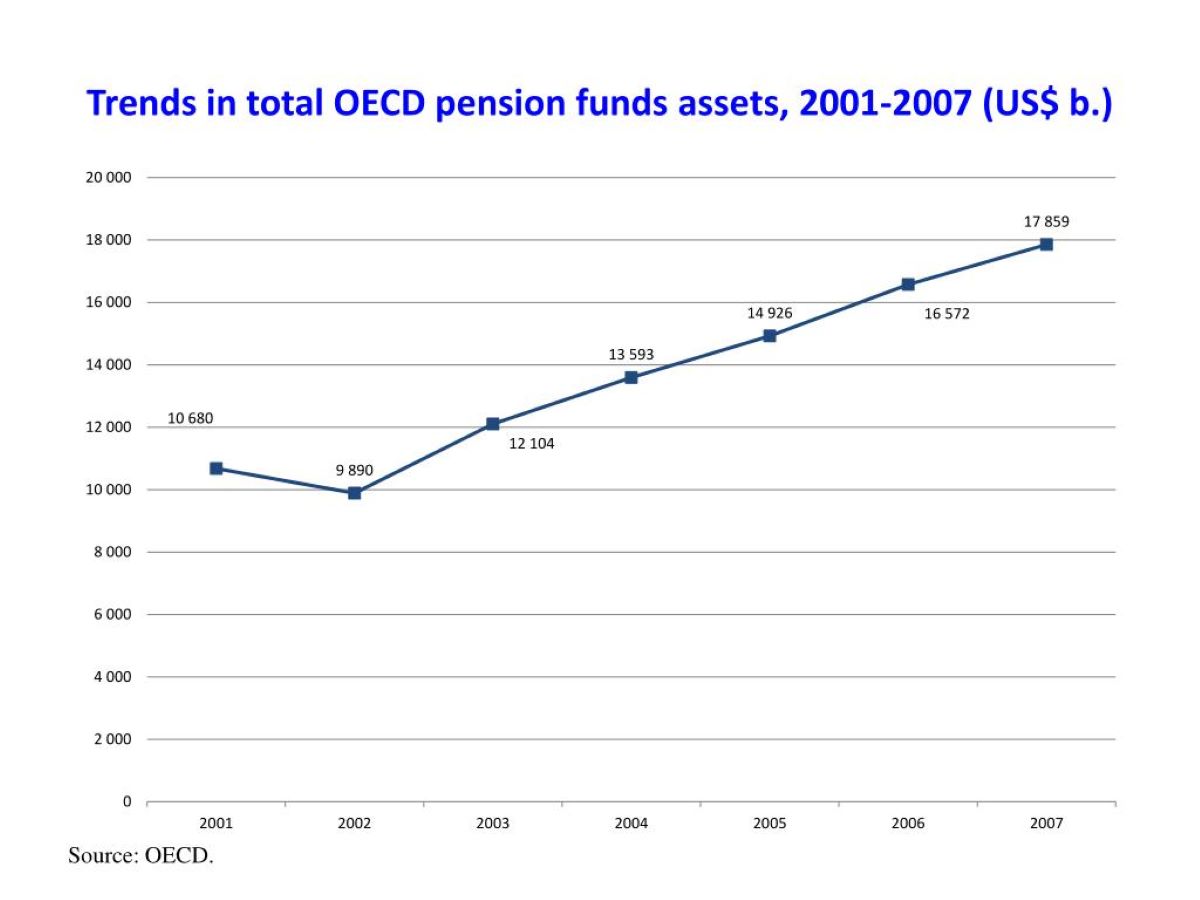

Finance
What Are Pension Funds?
Published: January 22, 2024
Learn about pension funds and how they can help you secure your financial future. Understand the role of pension funds in personal finance and retirement planning. Discover the benefits and considerations of investing in pension funds.
(Many of the links in this article redirect to a specific reviewed product. Your purchase of these products through affiliate links helps to generate commission for LiveWell, at no extra cost. Learn more)
Table of Contents
Introduction
Pension funds play a vital role in securing financial stability for individuals during their retirement years. These funds are designed to provide a steady income stream to retirees, ensuring that they can maintain their standard of living after leaving the workforce. Understanding the inner workings of pension funds, including their types, benefits, and potential risks, is crucial for anyone planning for their retirement.
As individuals embark on their professional journeys, it's essential to consider how they will support themselves once they no longer receive a regular paycheck. This is where pension funds come into the picture, offering a reliable means of financial support during retirement. By contributing to a pension fund throughout their working years, individuals can build a nest egg that will sustain them in their later years.
Pension funds are not only beneficial for individuals but also serve as a cornerstone of the broader economy. They contribute to the stability of financial markets and play a pivotal role in long-term investment strategies. Understanding the significance of pension funds is essential for anyone seeking to secure their financial future and contribute to the overall economic landscape.
In the subsequent sections, we will delve into the intricacies of pension funds, exploring their definition, functionality, various types, benefits, risks, and their impact on the economy. By gaining a comprehensive understanding of pension funds, individuals can make informed decisions regarding their retirement planning, ensuring a secure and stable financial future.
Definition of Pension Funds
Pension funds, also known as superannuation funds in some regions, are investment pools that individuals contribute to during their working years to secure a source of income in retirement. These funds are typically managed by financial institutions, pension funds managers, or designated trustees, who oversee the investment of contributions to generate returns over time. The accumulated funds are then used to provide retirement benefits to the contributors, ensuring financial security during their post-employment years.
One of the defining characteristics of pension funds is their long-term focus, as they are designed to provide sustained financial support over an extended period. Contributions to pension funds are often made through regular deductions from an individual’s salary, with both the employee and employer typically contributing to the fund. These contributions are invested in a diversified portfolio of assets, such as stocks, bonds, real estate, and other financial instruments, aiming to generate returns that will fund future pension payments.
Pension funds are subject to regulatory oversight and are governed by specific legal and fiduciary standards to protect the interests of the fund contributors. The management of pension funds is guided by strict investment guidelines and risk management protocols to ensure the prudent stewardship of the accumulated assets. Additionally, pension funds are often structured to provide various options for receiving retirement benefits, including annuities, lump-sum payments, or a combination of both, offering flexibility to retirees based on their financial needs and preferences.
Overall, pension funds serve as a crucial pillar of retirement planning, offering individuals a structured and disciplined approach to building a financial cushion for their post-work years. By understanding the fundamental concept of pension funds and their role in providing retirement security, individuals can make informed decisions about their long-term financial well-being.
How Pension Funds Work
Pension funds operate through a systematic process that involves contributions, investment management, and the eventual disbursement of retirement benefits. The journey begins with individuals, often in collaboration with their employers, making regular contributions to the pension fund. These contributions are deducted from the individual’s salary and are channeled into the fund, where they are pooled with contributions from other participants.
Once the contributions are amassed, pension fund managers or designated investment professionals oversee the allocation of these funds into a diversified portfolio of assets. The investment strategy aims to balance risk and return, with the goal of growing the fund’s assets over the long term. This diversified approach helps mitigate risk by spreading investments across various asset classes, such as stocks, bonds, real estate, and alternative investments, to capture potential growth opportunities while minimizing exposure to any single market fluctuation.
As the investments generate returns over time, the pension fund accumulates a pool of assets that form the foundation for providing retirement benefits. When participants reach the eligible retirement age or fulfill specific criteria, they can begin receiving payments from the pension fund. These payments can take the form of regular disbursements, known as annuities, or lump-sum distributions, providing retirees with a steady income stream to support their living expenses during retirement.
Throughout the entire process, pension funds are governed by strict regulatory guidelines and fiduciary responsibilities to ensure the prudent management of assets and the fulfillment of obligations to retirees. The oversight of pension funds aims to safeguard the interests of participants and maintain the long-term sustainability of the fund, reinforcing the importance of sound governance and risk management practices.
By understanding the mechanics of pension funds, individuals can appreciate the disciplined approach to building retirement savings and the role of strategic investment management in securing their financial future. This insight empowers individuals to actively engage in retirement planning and make informed decisions about their pension contributions and long-term financial well-being.
Types of Pension Funds
Pension funds encompass a diverse range of structures and designs, catering to the specific needs of contributors and the requirements of different industries and regions. Understanding the various types of pension funds is essential for individuals navigating their retirement planning journey, as it offers insights into the options available to them based on their circumstances and preferences.
Defined Benefit Pension Plans: In this traditional pension arrangement, retirees receive a predetermined amount of benefits based on factors such as salary history, years of service, and age at retirement. The responsibility for funding these benefits rests with the employer, who commits to providing the specified retirement income to eligible employees. Defined benefit pension plans offer retirees a predictable stream of income, providing financial security during their post-employment years.
Defined Contribution Pension Plans: Unlike defined benefit plans, defined contribution pension plans place the onus of funding retirement benefits on the employees themselves. Participants make regular contributions to the pension fund, often with matching contributions from their employers, and the eventual retirement benefits are based on the accumulated contributions and investment returns. This type of pension plan offers individuals greater control over their retirement savings and investment decisions.
Hybrid Pension Plans: Hybrid pension plans combine elements of both defined benefit and defined contribution structures, offering a blend of guaranteed retirement benefits and individual account features. These plans provide a degree of flexibility and risk-sharing between employers and employees, allowing for a more customized approach to retirement planning.
Public Pension Funds: Public pension funds are established and maintained by government entities to provide retirement benefits to public sector employees, such as civil servants, teachers, and law enforcement personnel. These funds play a crucial role in supporting the retirement security of public sector workers and are often subject to specific regulatory frameworks and funding mechanisms.
Private Pension Funds: Private pension funds are sponsored by private sector employers and are designed to offer retirement benefits to employees outside of the public sector. These funds are governed by regulations and industry standards, aiming to ensure the financial well-being of participants and the sustainability of the pension arrangements.
By understanding the distinct characteristics of each pension fund type, individuals can make informed decisions about their retirement planning strategies, taking into account factors such as employment circumstances, risk tolerance, and long-term financial objectives. This knowledge empowers individuals to align their pension contributions with their specific retirement goals, ultimately enhancing their financial preparedness for the post-work phase of their lives.
Benefits of Pension Funds
Pension funds offer a multitude of advantages that contribute to the financial well-being and security of individuals as they transition into retirement. Understanding these benefits is instrumental in appreciating the value of pension funds as a cornerstone of long-term financial planning.
Long-Term Financial Security: By participating in a pension fund, individuals can build a substantial nest egg that will provide a reliable source of income during their retirement years. The disciplined and long-term nature of pension contributions enables participants to accumulate substantial savings, ensuring financial stability in the post-employment phase of their lives.
Tax Advantages: Pension contributions often come with tax benefits, allowing individuals to reduce their taxable income by contributing to their retirement funds. This tax-deferred growth enables participants to maximize their savings over time, potentially leading to a more robust retirement portfolio.
Employer Contributions: Many pension funds feature employer matching contributions, effectively augmenting the retirement savings of employees. This additional financial support from employers can significantly enhance the overall value of the pension fund and accelerate the growth of retirement assets.
Investment Opportunities: Pension funds provide access to diversified investment portfolios that may not be readily available to individual investors. The professional management of pension fund assets allows for strategic allocation across various asset classes, potentially generating higher returns and mitigating investment risk.
Retirement Income Options: Pension funds offer retirees a range of options for receiving retirement benefits, including annuities and lump-sum payments. This flexibility empowers retirees to choose a payment structure that aligns with their financial needs and lifestyle preferences during retirement.
Stimulus to the Economy: Pension funds play a vital role in capital markets by channeling substantial investment into the economy. By directing funds toward productive assets and businesses, pension funds contribute to economic growth and development, creating a ripple effect that benefits society at large.
By leveraging the benefits of pension funds, individuals can fortify their financial resilience and cultivate a sense of confidence in their retirement preparedness. The combination of long-term savings, tax advantages, and investment opportunities positions pension funds as a powerful tool for securing financial stability in the later stages of life.
Risks of Pension Funds
While pension funds offer compelling benefits, they are not immune to certain risks that individuals should be cognizant of as they engage in retirement planning. Understanding these risks is crucial for participants to make informed decisions and implement strategies to mitigate potential challenges associated with pension fund investments.
Investment Risk: Pension funds are exposed to market fluctuations and investment volatility, which can impact the value of the fund’s assets. Economic downturns, stock market declines, and interest rate movements can lead to fluctuations in the fund’s investment returns, potentially affecting the overall value of retirement benefits.
Longevity Risk: With increasing life expectancies, retirees face the risk of outliving their retirement savings. Pension funds must anticipate the potential for extended periods of benefit payments, requiring prudent management to ensure the sustainability of retirement income for participants.
Regulatory and Legislative Changes: Changes in pension fund regulations and government policies can impact the structure and benefits of pension plans. Shifts in tax laws, retirement age requirements, and pension fund governance may introduce uncertainties that could affect the long-term viability of pension benefits.
Inflation Risk: Inflation erodes the purchasing power of retirement income over time, posing a risk to the real value of pension benefits. Pension funds must navigate the challenge of preserving the purchasing power of retirees’ income amidst inflationary pressures, emphasizing the need for inflation-adjusted investment strategies.
Operational Risk: Pension funds are susceptible to operational challenges, including administrative errors, cybersecurity threats, and governance issues. Effective risk management and robust operational controls are essential to safeguard the integrity and security of pension fund assets and operations.
Concentration Risk: Overexposure to specific asset classes or industries can introduce concentration risk to pension fund portfolios. Diversification strategies are essential to mitigate the impact of potential downturns in specific sectors or markets, reducing the vulnerability of the fund to concentrated risks.
By acknowledging and addressing these risks, pension fund participants can adopt proactive measures to safeguard their retirement savings and navigate potential challenges. Through prudent investment strategies, risk mitigation techniques, and ongoing monitoring of pension fund dynamics, individuals can enhance the resilience and sustainability of their retirement benefits.
Role of Pension Funds in the Economy
Pension funds play a pivotal role in the economy, exerting far-reaching impacts on financial markets, investment dynamics, and overall economic stability. Their contributions extend beyond individual retirement planning, encompassing broader implications for economic growth, capital formation, and market resilience.
Capital Mobilization: Pension funds channel substantial financial resources into capital markets, fostering the mobilization of funds for productive investments. By directing capital toward businesses, infrastructure projects, and emerging ventures, pension funds contribute to economic expansion and the creation of employment opportunities, driving overall prosperity.
Long-Term Investment: With a focus on sustained wealth accumulation over extended time horizons, pension funds serve as significant proponents of long-term investment strategies. This orientation toward long-term value creation aligns with the financing needs of infrastructure development, innovation, and strategic initiatives that underpin economic progress.
Market Liquidity and Stability: The participation of pension funds in financial markets enhances liquidity and stability, as their long-term investment outlook mitigates the impact of short-term market fluctuations. This stability fosters investor confidence and supports the efficient functioning of capital markets, contributing to overall financial resilience.
Corporate Governance and Accountability: As substantial shareholders in various companies, pension funds exert influence on corporate governance practices and accountability standards. Their engagement with corporate entities promotes transparency, ethical business conduct, and sustainable value creation, fostering a corporate environment conducive to long-term economic vitality.
Infrastructure Development: Pension funds play a crucial role in financing infrastructure projects essential for economic development. Their investments in infrastructure assets, such as transportation networks, energy facilities, and public utilities, contribute to the enhancement of societal infrastructure, laying the groundwork for sustainable economic progress.
Community and Social Impact: Pension funds, through their investment decisions, can support initiatives with positive social and environmental impacts. By integrating environmental, social, and governance (ESG) considerations into their investment strategies, pension funds can contribute to the advancement of sustainable and responsible business practices, fostering positive societal outcomes.
The multifaceted role of pension funds in the economy underscores their significance as drivers of long-term financial stability, economic development, and societal well-being. By aligning their investment practices with sustainable growth objectives and prudent risk management, pension funds can continue to serve as instrumental contributors to the economic landscape.
Conclusion
In conclusion, pension funds stand as pillars of financial security, offering individuals a structured and disciplined approach to building retirement savings. Their role in providing long-term income stability, tax advantages, and investment opportunities underscores their significance in retirement planning. While pension funds present benefits such as employer contributions, investment diversification, and economic stimulus, they also entail risks, including market volatility, longevity risk, and regulatory uncertainties. Understanding these dynamics empowers individuals to make informed decisions and implement strategies to mitigate potential challenges associated with pension fund investments.
Moreover, the broader impact of pension funds on the economy cannot be overstated. Their contributions to capital mobilization, long-term investment, market stability, corporate governance, infrastructure development, and social impact position them as influential drivers of economic growth and sustainability. By aligning their investment practices with sustainable growth objectives and prudent risk management, pension funds can continue to serve as instrumental contributors to the economic landscape, fostering prosperity and resilience.
As individuals navigate their retirement planning journey, a comprehensive understanding of pension funds is essential. By recognizing the nuances of pension fund structures, benefits, risks, and their role in the economy, individuals can navigate the complexities of retirement planning with confidence and foresight. Ultimately, pension funds stand as a cornerstone of financial preparedness, offering a pathway to a secure and fulfilling retirement for individuals and contributing to the broader economic well-being.
